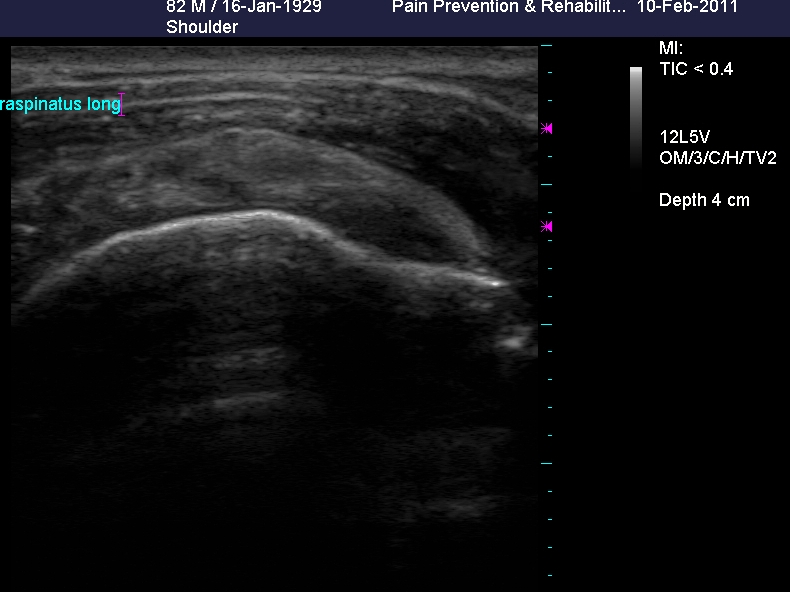MUSCULOSKELETAL ULTRASOUND
What is Ultrasound Imaging of the Musculoskeletal System?
How does the procedure work?
Ultrasound imaging is based on the same principles involved in the sonar used by bats, ships and fishermen. When a sound wave strikes an object, it bounces back, or echoes. By measuring these echo waves it is possible to determine how far away the object is and its size, shape, and consistency (whether the object is solid, filled with fluid or both).
In medicine, ultrasound is used to detect changes in appearance of organs, tissues, and blood vessels, or to detect abnormal masses, such as tumors. In musculoskeletal exams, ultrasound is a remarkable tool to assess soft tissue structures including tendons, ligaments, muscles, and joints.
In an ultrasound examination, a transducer both sends the sound waves and records the echoing waves. When the transducer is pressed against the skin, it directs small pulses of inaudible, high-frequency sound waves into the body. As the sound waves bounce off of internal structures, the sensitive microphone in the transducer records tiny changes in the sound’s pitch and direction. These signature waves are instantly measured and displayed by a computer, which in turn creates a real-time picture on the monitor. One or more frames of the moving pictures are typically captured as still images.
What are the BENEFITS? risks?
Benefits
- Ultrasound scanning is noninvasive (no needles or injections) and is usually painless.
- Ultrasound is easy-to-use and less expensive than other imaging methods.
- Ultrasound imaging does not use any ionizing radiation.
- Ultrasound images soft tissues structures that do not show up well on x-ray images.
- Ultrasound provides dynamic imaging, making it a good tool for guiding needles for more accurate injections, needle biopsies and needle aspiration.
- Unlike MRI scans, ultrasound is not affected by cardiac pacemakers, implants or fragments within the body.
- Ultrasound is also an excellent alternative to MRI for claustrophobic patients.
- Ultrasound may have advantages over MRI in seeing tendon and ligament structure.
- Ultrasound is safely used during pregnancy and in children.
Risks
- For standard diagnostic ultrasound there are no known harmful effects on humans.
How is Ultrasound preformed?
For most ultrasound exams of the musculoskeletal system, the patient is either seated or lying down. A clear water-based gel is applied to the area of the body being studied to help the transducer make secure contact with the body and eliminate air pockets between the transducer and the skin. The transducer is firmly pressed against the skin in various locations, sweeping over the area of interest or angling the sound beam to better see an area of concern.
An ultrasound examination is usually completed within 15-30 minutes but may occasionally take longer if injections are to be preformed under ultrasound guidance. Most ultrasound examinations are painless, fast and easy. If scanning is performed over an area of tenderness, you may feel pressure or minor pain from the transducer. After an ultrasound exam, you should be able to resume your normal activities immediately.
ROTATOR CUFF: SUPRASPINATUS TENDON:
HIP JOINT:
Contact Us
13710 Olive Boulevard (Primary Office)
Chesterfield, MO 63017
Telephone: 314-469-PAIN (7246)
Fax: 314-469-7251
Exchange: 314-441-6965 (for after-hour Emergencies Only)
Hours:
Monday thru Friday
8:30 AM – 4:30 PM



